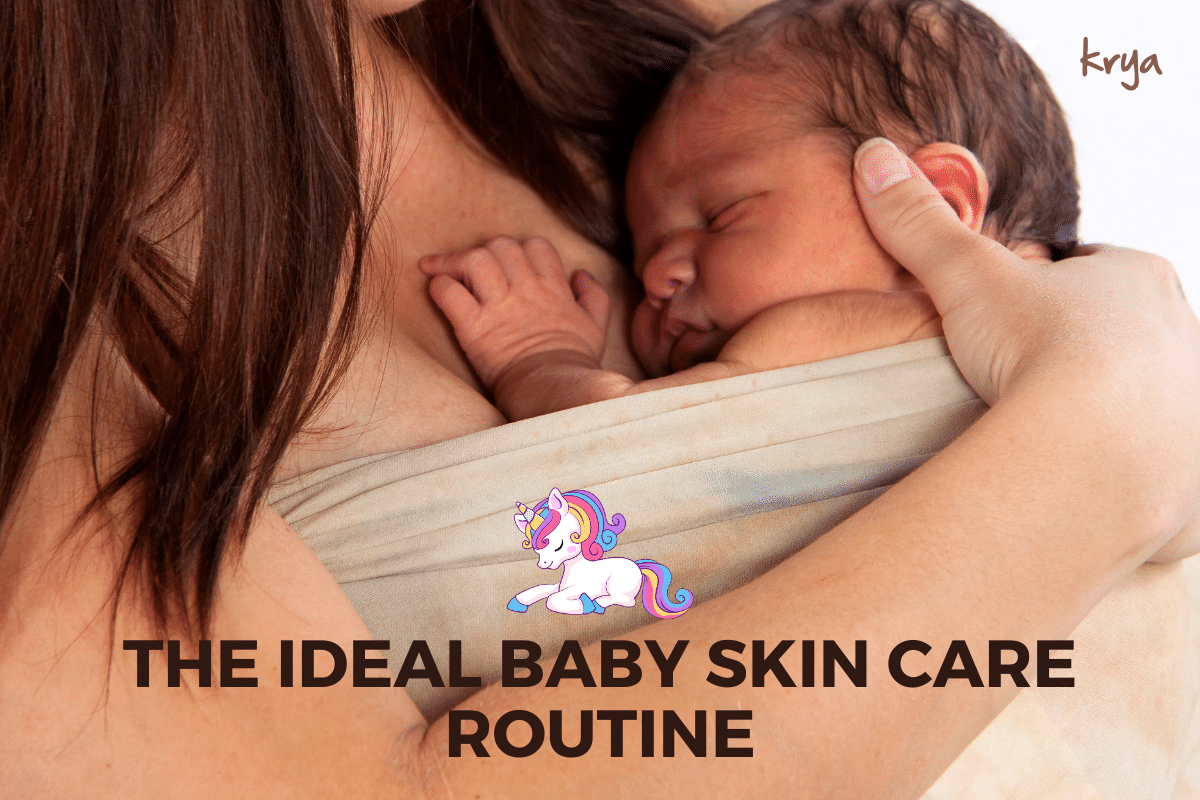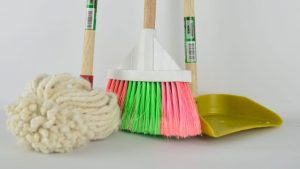It almost always comes back to water. On the Krya blog we focus on sustainable urban living. We explore the many different ways in which urban living is stressing the environment and equally the many interesting ways in which we can return to a holistic, sustainable way of living.
And we are constantly amazed by the myriad ways in which water gets polluted. Ground water and water on the surface of the earth (both fresh and saline). While 70% of the planet is water, there is no good reason to go around trashing this precious resource. This is simply because it takes only a moment to pollute water but an eternity (and a ton of money) to clean it again and make it fit for consumption – by humans, plants and animals. This seems obvious yet the daily massacre of water that takes place compels me to point it out here.
The textile industry is a leading source of water pollution. World Bank estimates that 20% of all industrial water pollution comes from the dyeing of textiles. The textile mills release millions of gallons of wastewater containing pollutants like chlorine, formaldehyde, lead & mercury into our freshwater bodies. Some 72 toxic chemicals had been have linked to textile dyeing. A single T-shirt made from regular cotton requires 2700 litres of water and uses 150 grams of chemicals in the production process.
How did the textile industry sink to this state of affairs?
Dye
Dyeing is an ancient art, as old as humanity.

The original dyes were mostly plant derived, from roots, berries, fruits and bark. They used simple methods like crushing or boiling to dye fabric. Dyeing was in fact a secretive subject and only a select few could access it, wearing dyed clothes as status symbol.

The medieval depiction above of Emperor Charlemagne’s coronation by the Pope, shows the Emperor wearing am indigo robe and the Pope wearing a white robe. Indigo and purple in ancient times were worn only by royals. Similarly, in Indonesia, the batik process of dyeing used several symbols and certain symbols could only be worn by royals. People could be placed in the pecking order just by looking at the symbols on their batik clothes.
Some of the most famous ancient dyes were red madder, extracted from the roots of the Rubia Tinctorum and the blue indigo from the leaves of the Indigofera tinctoria.
Indigo, the original king of dyes
Apart from the glorious deep blue colour that the Indigo plant delivers, it was the king of dyes from ancient times for a number of reasons. Most dyes require a mordant like alum, common salt or salts of aluminum, chromium etc, to fix the dye to the fabric and ensure colour fastness. Indigo is unique in that it uses a fermentation process to release the coloring molecules and fabric can be directly dipped into the indigo and dried to get the desired blue colour.

In ancient times, many households would mix the ingredients required into a vat, let the mix ferment for a week to get the dye and then dip the fabric into the vat to colour it. This indigo vat then can be maintained for many years on a continuous basis, adding some indigo as and when the dye dilutes. Some Indigo vats have been known to be used for over a hundred years continuously. It was common for many households to have their own indigo vat. This was a very local, DIY, contained process and very environmentally friendly.

The picture above, shows Master Dyer Badshah Miyan of Jaipur following this traditional Indigo dyeing process today in Jaipur. Of course we cannot all wear Indigo and other colours are needed. The fundamental unit of living has also changed and we cannot all have an ancestral indigo vat running to meet our clothing needs. Further with the growth in demand for the dye, indigo cultivation started replacing other food crops which made it a precious commodity.
Around 1850 several organic chemists began research into synthesis of indigo from chemical sources. By 1897, BASF had developed a commercially viable chemical synthesis that eliminated the need for the leaves of the Indigo plant. In due course in the 20th century all natural dyes were replaced by their synthetic equivalents. Unfortunately what started off as an innocent quest to replace natural indigo with a cheaper chemically synthesized alternative ended up in an global industry that freshwater with toxic chemicals inexorably.
The T-Shirt Town in Tatters
Tirupur in Tamil Nadu is a leading textile center accounting for 80% of India’s knitwear exports. Tirupur textiles accounted for over $ 4 billion in revenues per year in recent times. It provides employment to over 6 lakh people.
This is really commendable from the economic point of view.
But the environmental costs of the past few decades have been terrible too.
According to one Tamil Nadu pollution control board report, each year the Tirupur textile industry generates 833,000 tonnes of toxic waste including bleach and sulfonic dyes, much of it directly dumped into the nearby Noyyal river. This untreated chemical effluent drains into the Kaveri river and then finally washes up in the Bay of Bengal. The textile industry in the past few decades has contaminated around 80,000 acres of cropland in this area ,mostly rice fields. The locals have in the past found that the red chemical dye from the Noyyal river water was absorbed by the coconut trees on the banks, dyeing the coconuts a deep red colour.

The Audubon magazine has this to say about the state of affairs in Tirupur
“The Noyyal is now essentially an open sewer. At Kasipalayam, where the river slows down and effluent accumulates, the water runs brown and smells unbearably of human waste. The banks are strewn with plastic bags, aluminum cans, and other garbage. Close inspection sometimes reveals a splash of unnatural green or purple from the upstream dye factories.”
The environmental risks are similarly severe at other Indian textile hubs like Tirupur.
The pollution is not new news
Since the 1990’s several groups have taken legal action against the polluting units near Noyyal and a lot of legal back and forth has happened through supreme court orders. In the meantime effluent treatment technology has also improved. To manage the high costs of effluent treatment, common effluent treatment plants ( CETP) have been in vogue for some time now. In Tirupur some 18 CETPs handle the liquid waste of 350 dyeing units. However these CETPs still discharge varying levels of harmful matter into the rivers. With the further development of Zero liquid Discharge ( ZLD ) technology , it is possible to reuse all the waste water from the dyeing units.

Treated & Untreated Samples from Tirupur ZLD plant
This prompted the Supreme Court in January 2011 to order the Tamil Nadu government to close all polluting units that did not comply with zero liquid discharge norms. While the Tirupur exporters association claimed in December 2012 that they had achieved 100% ZLD levels, a February 2014 report in The Hindu states that pollution of the Noyyal river continues unabated.
What next?
At the start of this piece I noted that it takes only an instant to pollute water but an eternity ( and a ton of money) to undo the damage, which is why each act of pollution must be avoided.
So a number of questions arise.
Can the entire clothing of the planet be met through sustainable textiles, right now ? this year ? How do I know if my brand of clothing uses sustainable practices ?
I checked out the sustainability report of the first brand that popped into my head, Fabindia.
Now this is the information on the Fabindia website
“We use both vegetable dyes and commercial dyes with the goal of minimizing our impact on the environment while striving for the best color properties. For our bleaching process we use only hydrogen peroxide which is totally biodegradable.”
This information gives me 2 concerns straight away
- I am not comfortable with the vague term “commercial dyes”. So the next time we hit Fabindia , I need to ask the store staff for only the vegetable dyed items
- Hydrogen Peroxide is not inspiring me at all. I have many concerns about the biodegradability of hydrogen peroxide. My simple test is as follows : Can I pour a glass of peroxide into my plants ? I have serious doubts. While I still cannot rule out the safe use of hydrogen peroxide in bleaching textiles, I at least know that fabindia does not use Chlorine bleach in its process, which is considered to be far more toxic as an effluent.
However the more I try and find details about brands with global supply chains with extremely opaque information flows, I realize that it is easier to discover local brands that have clear picture of the entire process. It is my one person satyagraha.
For example, as I type this , I am wearing a shirt from Tula, a brand that creates clothes from rain fed organic cotton, which is hand dyed with vegetable dyes and hand woven.

The entire supply chain is contained within a 500 km radius of my home. It cannot not get more sustainable than this. I cannot get everything that I need from Tula, but I can certainly get a few fantastic shirts, which is a good start.
So how sustainable is the garment that you are wearing right now?
To read more about sustainable fabric start here:
- Our introductory post on the sustainable fabric series
- On the One Person Satyagraha




